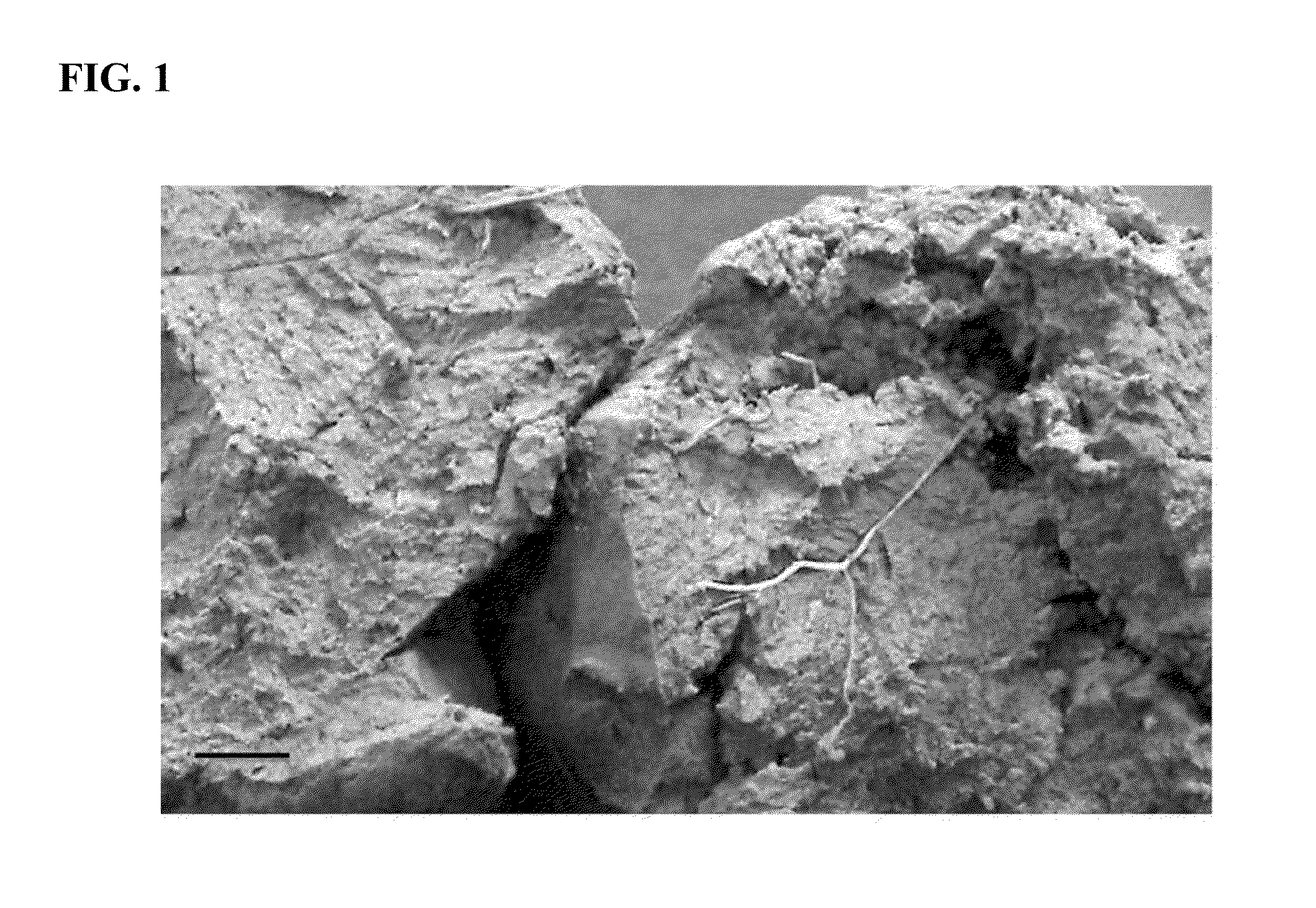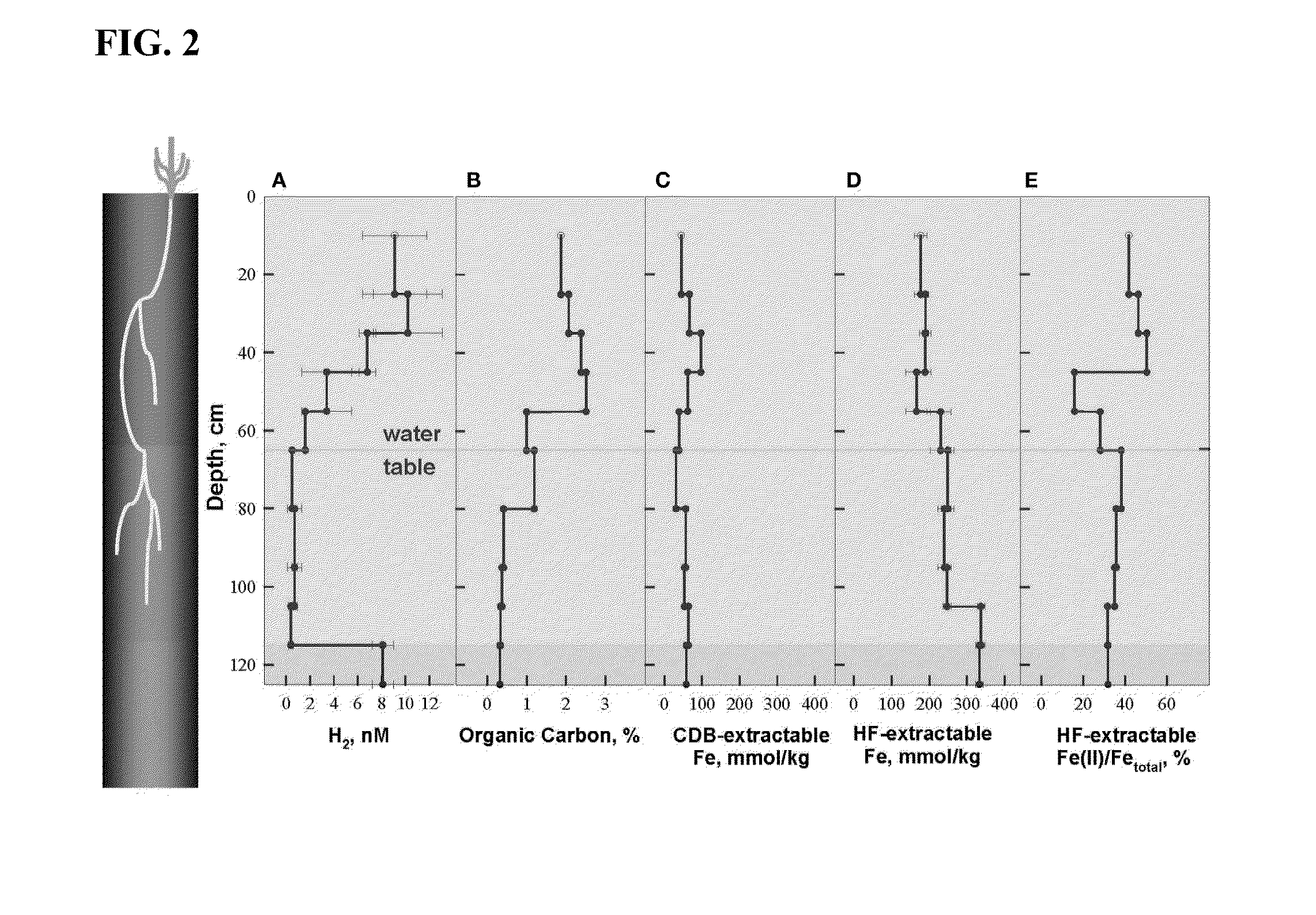Using phyllosilicate-fe(II)-oxidizing soil bacteria to improve fe and k plant nutrition
a technology of phyllosilicate and soil bacteria, which is applied in the field of using phyllosilicatefe (ii)oxidizing soil bacteria to improve fe and k plant nutrition, can solve the problems of slow process, inability to supply plants with the biologically required concentration of potassium, and common deficiency of potassium in plants, etc., to achieve the effect of improving the bioavailability of potassium to plants
- Summary
- Abstract
- Description
- Claims
- Application Information
AI Technical Summary
Benefits of technology
Problems solved by technology
Method used
Image
Examples
example 1
[0042]Materials and Methods
[0043]Study site and sample collection. Soil and groundwater samples were collected from Shovelers Sink site located in the Cross Plains, Wisconsin unit of the Ice Age National Scientific Reserve, about 50 meters from Mineral Point Road and 17 m from the pond. Soils were collected (January 2007, July 2007, June 2008, and September 2009) with a stainless steel coring device. Fluid from below the water table was collected in 50-mL plastic tubes. Core sections were placed in sterile sample collection plastic bags and immediately delivered to the laboratory. All core sections were placed into an anaerobic chamber filled with N2:H2 mix (95:5), homogenized, and dispensed into serum bottles or pressure tubes for immediate experimentation, or into large Pyrex bottles with thick rubber stoppers for storage and / or later use. After removal from the anaerobic chamber, all bottles were flushed with O2-free N2 (passed over reduced, hot copper filings) to remove H2 from ...
example 2
Biogeochemistry and Soil Mineralogy of Sample Site
[0057]The soil at Shovelers Sink represents a redoximorphic silt loam interspersed with RCG roots down to the depth of 1 m (FIG. 1). The depth of the water table ranged from 60-80 cm. Soils collected in July 2007 were characterized in detail, at which time the water table was located at about 65 cm depth (FIG. 2).
[0058]Organic carbon concentrations were highest within the main root zone above 55 cm (1.7-2.5%), intermediate in the vicinity of the water table (1.0-1.2%), and lowest below 80 cm (0.32-0.41%) where few, if any, RCG roots were present (FIG. 2B). Total HF-extractable iron (FIG. 2C) concentrations ranged between 196 and 333 mmol / kg and showed a trend opposite of that for organic carbon, with Fe concentrations being lowest (166-190 mmol / kg) above a depth of 55 cm, intermediate from the water table down to 105 cm (230-249 mmol / kg), and highest below 105 cm (333-337 mmol / kg). The fraction of total Fe present as Fe(II) was high...
example 3
Microbial Isolates
[0064]Fe(II)-oxidizing organisms were isolated from (1) soil samples collected in July 2007, June 2008, and September 2009, and (2) the highest positive dilutions from MPN studies set up in 2007 and 2009. Biotite was utilized as a solid phase form of Fe(II) for these studies. Unlike reduced smectite, structural Fe(II) in biotite is not subject to spontaneous reaction with O2, thus permitting the use of O2 as the electron acceptor for lithotrophic Fe(II) oxidation. Recent studies have demonstrated that the Fe(II)-oxidizing, NO3− reducing culture described by Straub et al. (Straub et al., 1996) can utilize Fe(II) in biotite as a sole electron donor for chemolithotrophic growth (Shelobolina and Xu, 2011). Samples and last positive MPN dilution cultures were serially diluted in biotite-containing roll-tubes. After solidification 3 ml of filter sterilized air were added to the headspace. Roll-tubes were incubated vertically at 20-22° C. (room temperature). Over a perio...
PUM
 Login to view more
Login to view more Abstract
Description
Claims
Application Information
 Login to view more
Login to view more - R&D Engineer
- R&D Manager
- IP Professional
- Industry Leading Data Capabilities
- Powerful AI technology
- Patent DNA Extraction
Browse by: Latest US Patents, China's latest patents, Technical Efficacy Thesaurus, Application Domain, Technology Topic.
© 2024 PatSnap. All rights reserved.Legal|Privacy policy|Modern Slavery Act Transparency Statement|Sitemap



